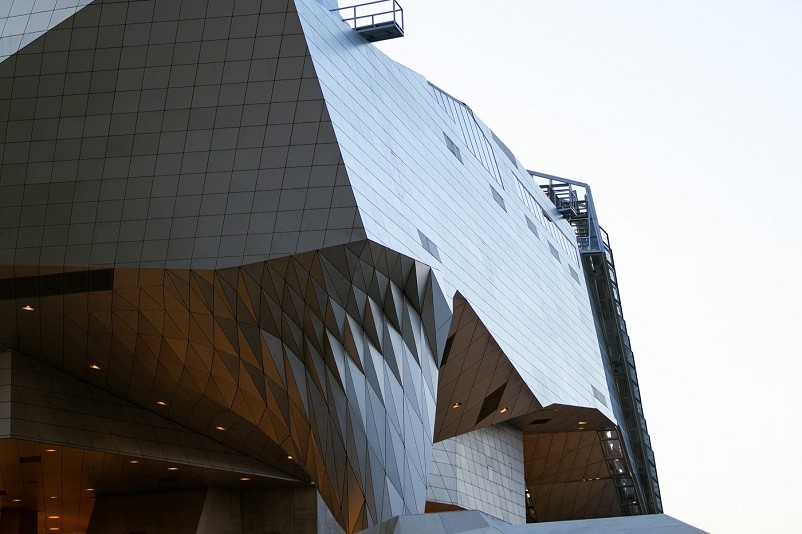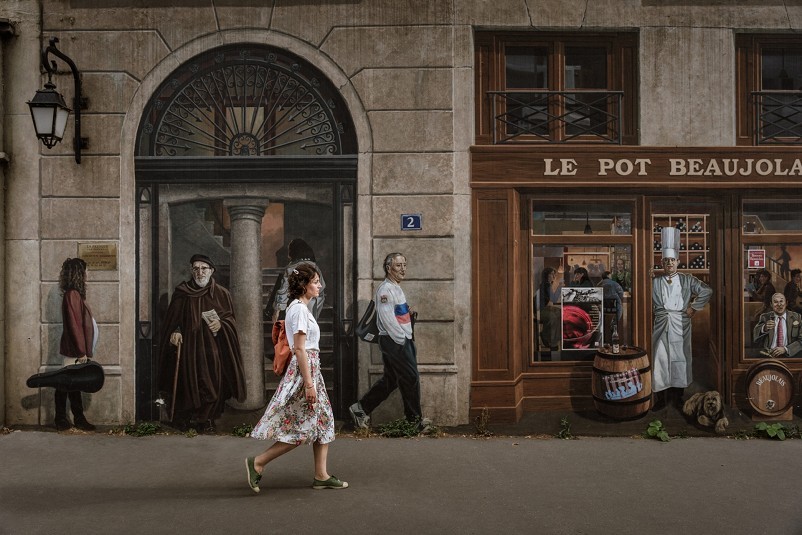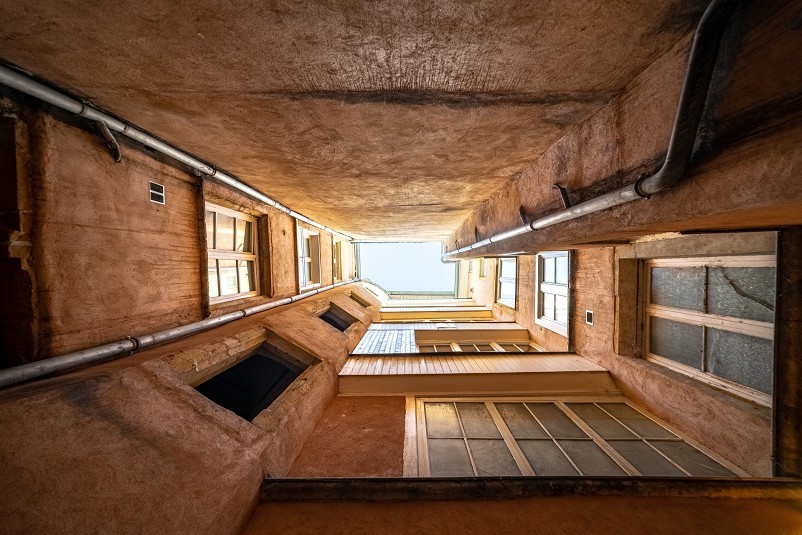
What to do on a culture trip to Lyon?
When you come to France, one of the best cities to visit is undoubtedly Lyon. As one of the largest and oldest urban centres in the country, it has accumulated thousands of years of history and monuments. Its cultural heritage is one of the richest and tourists are in for one of the most fascinating journeys as they explore its ancient streets and modern districts. Whether you come to live or to study in Lyon, there’s always something to discover! Let's find out what you should see on a cultural trip to Lyon!
Must see in Lyon
First of all, if you’ve never been to Lyon, there are certain monuments and museums that you must visit. These are the most famous ones, those that immediately spring to mind when the city is mentioned.
The Fourvière hill and its basilica
This is one of the most famous sights in Lyon: the Fourvière hill can be seen from most of the city and is easy to recognise thanks to the Notre-Dame de Fourvière basilica. It can be reached by funicular. Once there, you can visit the basilica and enjoy an incredible view over Lyon.
Ancient Theatre of Fourvière
Lyon was founded by the Romans after the conquest of the Gauls. The ancient Theatre of Fourvière is one of the witnesses of this history. It is well preserved and welcomes tourists. It is still used today as a venue for concerts, theatre performances, dance shows, etc., especially during the Nuits de Fourvière festival between July and August every year.
The Lyon Old town
This is a district with Renaissance buildings, colourful facades and many streets to explore. There are many ancient buildings such as the Cathedral of Saint Jean or St George’s Church. It is also famous for its “traboules”, ancient hidden passageways across buildings used by silkworker to transport their products quickly from the manufactures to the port. Its historical importance and well-preserved architecture have led to its inclusion in the UNESCO World Heritage List. It is one of the most typical places to visit during your cultural trip in Lyon.
Musée des Confluences
This natural sciences and anthropology museum is located in a deconstructivist building in one of Lyon’s most modern districts. In this museum, you will discover the history of the universe from the Big Bang, the history of life through evolution, the development of human societies and how they deal with life and death, in 4 different exhibitions.


Famous things to see
Lyon has many other monuments that you should definitely visit, which may not be as famous as the aforementioned landmarks, but they are definitely worth considering.
The Canut wall painting
The Croix-Rousse is one of Lyon’s most famous districts and hosts one of the best examples of art in Lyon. It is best known for having been where silk workers (the “canuts”) used to live and revolted several times in the 19th century. While it is one of the most famous districts in Lyon, did you know that it is also home to the largest wall painting in Europe? Don’t miss this incredible trompe-l’œil which was painted in 1987 over an area of 1200m² and has since been regularly updated to reflect changes in the area. The staircase at the centre of the painting gives an incredible impression of depth.
Rosa Mir Garden
This small hidden gem is concealed in a 400m² interior courtyard in the Croix-Rousse district. Designed by Senis Mir between 1957 and 1983, it is named after his mother. This Spanish national left his country because of the civil war. After surviving throat cancer, he decided to make his dream come true by creating his own garden. He collected stones and shells to decorate the garden, in a style reminiscent of his influences, such as Gaudí, the Alhambra in Granada and the Basilica of Montserrat in Catalonia. The result is absolutely unique.
Museum of Illusions
As its name suggests, the Museum of Illusions is entirely dedicated to optical illusions. As you move from room to room, you will be confronted with illusions that play with your perception. The anti-gravity room, for example, plays with how your brain deduces whether you are on flat or sloping ground based on what your eyes see. Other rooms with forced perspective will make you aware of how your perception of distance can be distorted. Everything is explained during your visit and you will learn a lot about how your brain works.
Musée Lumière
Lyon is also famous for its role in the development of cinema. In 1895, the Lumière brothers filmed the workers leaving their factory. This is one of the earliest footage ever created and is often considered to be the first film in history. Today, this history is honoured in the Lumière Institute and its museum, where you can discover the hangar, restored in the late 90s, and the Lumière Villa, where you can see many of the brothers’ inventions, such as the autochrome, which made it possible to take photographs in colour… in 1907!


Little known cultural landmarks in Lyon
Are you the kind of person who always seeks out the most obscure or lesser-known aspects of the cities you visit? Are you drawn to the most unusual attractions? On a cultural trip to Lyon, you’ll be delighted to discover…
The Abode of Chaos
In French, la Demeure du Chaos, is a peculiar open-air museum of contemporary art in Saint-Romain-au-Mont-d’Or, north of Lyon. Its particularity lies in its visual aspect, which reminds the visitor of a post-war landscape, with rusted metal and the ruined and dilapidated appearance of the building. The museum houses 6,300 works of art, including 4,500 sculptures, most of which are made of raw steel.
Urban Museum Tony Garnier
In the 1930s, a new district called Bon Marché began to welcome the workers for whom its social residential buildings were just built. Also known as the quartier des États-Unis (United States district), it was restored between 1985 and 1997. What makes it so interesting, you may ask? Starting in the late 80s, local artists decided to use the large walls of the buildings as canvases for gigantic wall paintings. They painted 19 of them, then 6 more were created by international artists to represent their ideas of the ideal city as part of a UNESCO initiative. The 25 paintings are a sight to behold!
The ossuary of the Chapelle Sainte-Croix
Built in 1901, the Chapelle Sainte-Croix (Holy Cross Chapel) is one of the most prominent monuments in the Gones district. It was built to commemorate the victims of the siege of Lyon during the French Revolution. While the building itself is impressive, the strangest thing about it is its crypt. If you visit it, you will be greeted by the skulls and bones of people who died during the Revolution. In the chapel above you will also find a list of 2,000 people who lost their lives in Lyon during this period. The ossuary is only open by appointment.
Museum of firefighters of Lyon Rhône
Have you ever thought of visiting a museum dedicated to firefighters? It was created in 1971 to save obsolete vehicles from destruction. Since then, the collection has grown to include many items related to firefighters. Discover the history of these lifesavers through all sorts of equipment, a large collection of French and foreign helmets and 100 vehicles (the oldest dating back to 1910).


Come and discover one of the most exciting cultural cities in France!
As you can see, a cultural trip in Lyon can be very rich. From the most famous and visible buildings to the most hidden curiosities, the city is full of monuments, museums and landmarks of all kinds, ranging from the conventional and classic to the most bizarre and unexpected. In any case, these are just a few examples in a city that is one of the best to visit in France and can take weeks to explore!


Do you have a question? Our teams are here to answer you!
Fields marked with an asterisk (*) are mandatory.


